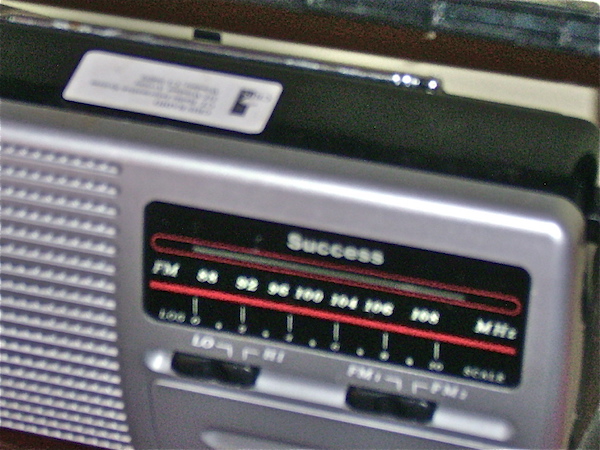
Knowing that Draper had been an engineer, Teresi encouraged him to build his own device that would remove the toy from the equation.Īdopting the name Captain Crunch, Draper’s first blue box consisted simply of an electronic audio oscillator (to produce the all-important tones), a speaker for the phone’s mouthpiece, and a telephone pad. Up until that point, most phone phreaks who couldn’t whistle at 2600Hz instead utilized a toy whistle given out in Cap’n Crunch cereal boxes that just happened to hit that perfect tone. It worked everywhere, that’s the thing about it. “I couldn’t believe that the phone companies were that stupid to make it so easy to make these calls. “I was really fascinated by the fact that you could inject tones into the phone,” Draper recalls. More than a decade later, after leaving the Air Force in 1968, Draper was taught Engressia’s telephonic magic by a mutual friend, a blind teenager named Dennis Teresi.
#Blind man whistle phone free#
In 1957, Joe Engressia, a blind hacker better known as Joybubbles, discovered that whistling a high-pitched tone of 2600Hz (a seventh octave E, musically speaking) would reset the line, ultimately allowing the user to make free phone calls. There’s a playful mischief about him, but he’s serious when it comes to his craft, relaying technical, intricate details about the systems he worked to hack.Īt the time, the automated control signaling system used nationwide relied on tonal frequencies to identify unused long-distance lines. He also claims he once bypassed the Iron Curtain to call Moscow in the Soviet Union. He rocks back in his chair and retells how he anonymously called in a national emergency directly to a furious President Richard Nixon on the Oval Office phone line, reporting that the West Coast had run out of toilet paper. He’s been trying to get back in shape after having a major back surgery that was, in large part, crowdfunded by his fans and followers. Phreaks and geeksĭraper’s just returned from a mid-afternoon training session at his local gym in Las Vegas. Wozniak panicked and killed the connection. No one was sure what to do or what it meant. Now, for the first time, Draper is looking to publish his story with Beyond the Little Blue Box, an autobiography for which he’s about to launch a Kickstarter campaign.Īfter a beat, Draper picks back up the story, drawing it out with his low nasal rasp: Another, more suspicious voice came on the line. And according to Jobs, in a rare 1994 interview, without him there wouldn’t have been Apple. He’s the original hacking prankster, a purist driven by curiosity and craftsmanship, with a lifetime of exploits that have pushed technological and legal boundaries. But Draper is far from being just an important footnote in Apple’s history. Wozniak and Jobs, of course, would go on to found the most successful tech company in the world. He looks slightly disheveled, with a wiry gray beard, unassuming. Just one moment.”ĭraper, now 74, pauses and grins as he recounts the story. “It’s four in the morning in the Vatican. “Sir, but the Pope isn’t here right now,” a confused clergyman allegedly replied.

I must confess my crimes,” Wozniak declared, Draper recalls decades later, his voice cackling. “This is Henry Kissinger, I must talk to the Pope right away. Draper holds out the handset to Wozniak just as someone answers on the other line. After several attempts, the call goes through. Huddled around the blue box in a darkened student dorm at the University of California, Berkeley, the group dials out to Vatican City. Tilting the device’s mouthpiece and mumbling about Wozniak’s digital redesign, Draper finally gets it to work.


Wozniak and Jobs only know Draper by his notorious pseudonym, Captain Crunch, the elusive character at the center of an underground subculture of rebel hackers called the phone phreaks. This is Draper’s gift to the world, and his curse.
#Blind man whistle phone series#
If he’s successful, they’ll be able to call anywhere in the world for free, manipulating the complex phone system with little more than a series of perfect tones. It’s 1972, and a nervous Steve Jobs and Steve Wozniak look on anxiously, hoping he can make their makeshift device work. John Draper fiddles with the mouthpiece of the little blue box on the table, blowing into it over and over again.


 0 kommentar(er)
0 kommentar(er)
